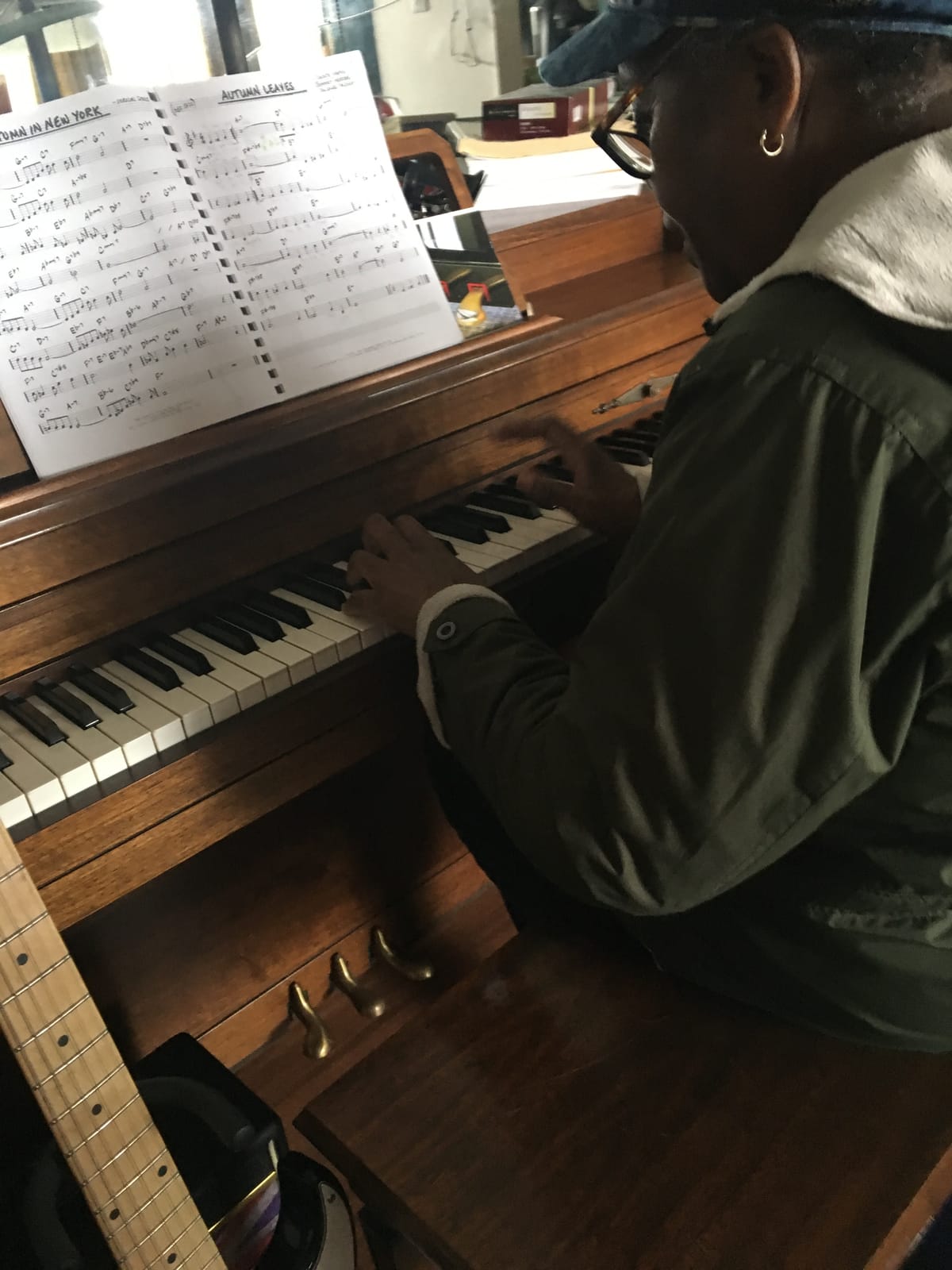Mathematics and Music
How are they related?

As a mathematician and musician, I am in a unique position to explain how this all works.
I mean, I won’t explain how it all works, because that’s a several encyclopedia volume series and you will be reading forever. This is just a “Let’s get started!” type of thing.
Here we go!
Mathematics is defined as:
the abstract science of number, quantity, and space.
When mathematics is studied in its own right, we call this pure mathematics.
When mathematics is studied as it is applied to other fields like physics, we call this applied mathematics.
I have a degree in pure mathematics from Wayne State University.
Music is defined as:
vocal and/or instrumental sounds combined in such a way as to produce beauty of form, harmony, and expression of emotion
The word “music” is from the French musique, taken from the Greek mousikē (tekhnē)—Art of the Muses.
How are they related?
First, let me qualify this explanation by stating that I will focus on Western music.
Let’s start with time.
Time Signatures
Written music is broken up into measures, and each measure has a specific number of beats. Those beats are indicated by ratios.
All of Western music is defined by ratios:
- Four/four time (4/4) means there are four beats to one measure, with a quarter note getting one count. This is often referred to as “common time” because it is the most common time signature in Western music, especially in rock, pop and country music.
- Three/four time (3/4) means there are three beats to a measure with a quarter note getting one count. We recognize this when we hear waltzes.
- There are many other time signatures: 2/4, 6/8 (six beats per measure with an eighth note getting one count), 5/4 (the song Take Five by Dave Brubeck is written in 5/4, with five beats per measure and a quarter note getting one count), and others.
Intervals
An interval is the distance in pitch between two notes.
The distance between C and C# is half of a note.
The distance between C and D is a whole note.
The distance between C and E is a major third.
The distance between C and G is a major fifth.
The distance between C4 and C5 is an octave.
The use of the word “major” suggests there are minors as well.
There are.
When two notes are three half steps apart, that is a minor third.
The distance between C and D#, for example, is a minor third.
Scales
A scale is a specific sequence of notes that forms intervals between each one.
For example, a chromatic scale beginning on C4 includes C4 (the root note), C# (the black key next to C on the piano), D, D#, E, F, F#, G, G#, A, A#, B and C, if we are ascending.
The interval between each note is a half-step in tone, and the chromatic scale includes all twelve notes between C4 and C5.
In a major scale, there are eight notes. There is a formula for major scales:
W-W-H-W-W-W-H
(whole-whole-half-whole-whole-whole-half)
This means:
- the interval between the first and second notes is a whole tone
- the interval between the second and third note is a whole tone
- the interval between the third and fourth note is a half tone
- the interval between the fourth and fifth note is a whole tone
- the interval between the fifth and sixth note is a whole tone
- the interval between the sixth and seventh note is a whole tone
- the interval between the seventh and eighth note is a half tone
If you apply this formula, you can work out any major scale on your own.
So, the major scale of D would consist of
D—the root note
E—whole tone from D
F#—whole tone from E
G—half tone from F#
A—whole tone from G
B—whole tone from A
C#—whole tone from B
D—half tone from C# and one octave (eight notes) from the root
There are major scales, minor scales, the chromatic scale, pentatonic, blues scales, Byzantine scales, maqams, and more.
Chords
Chords are combinations of notes that are played simultaneously. We represent chords mathematically through intervals.
For example, a root note, the third note and the fifth note in a scale played together form a chord. These particular notes—the root, the third note and the fifth note—form what’s called an arpeggio.
If we stick with the C scale example, this means that the arpeggio for C consists of the notes C, E and G.
If we use the D example, the arpeggio for D consists of the notes D, F#, and A.
Mathematics is the abstract science of number, quantity, and space.
The number part is clear, the quantity part is clear, but what about the space?
Well, in order for there to be music, there must be sound.
And in order for sound to happen, something must vibrate. This is physics.
It’s the vibration that starts it all.
When anything vibrates, the air around that thing transfers energy, creating a chain reaction that propagates the sound wave.
When you experience music, you are not just experiencing it in your ears.
You’re experiencing it full bodily. All of you is affected.
That’s why sometimes you’ll hear something and you get goosebumps. Sometimes the goosebumps occur because you were mentally affected by the music, and sometimes it’s the actual sound vibrations themselves that affect you.
Think rock concert. That music is blaring itself, waves upon longitudinal waves, onto your skin, your hair. You are a medium for sound. We all are.
That’s the “space” part.
Noise pollution can affect you in negative ways. Sound healing can affect you in positive ways.
We use sound to obliterate tumors. We use music to heal.
It’s all vibration. It’s all mathematics.
We teach this.
Would you like me to teach this to your teachers, your corporation, your university board members? Would you like me to share how the Arts must remain in schools, or how women in STEM like me help advance technology and medicine? Call us at 313.687.4433 or email us at ThePianoInstructorConsulting@gmail.com. We’d be happy to help.
